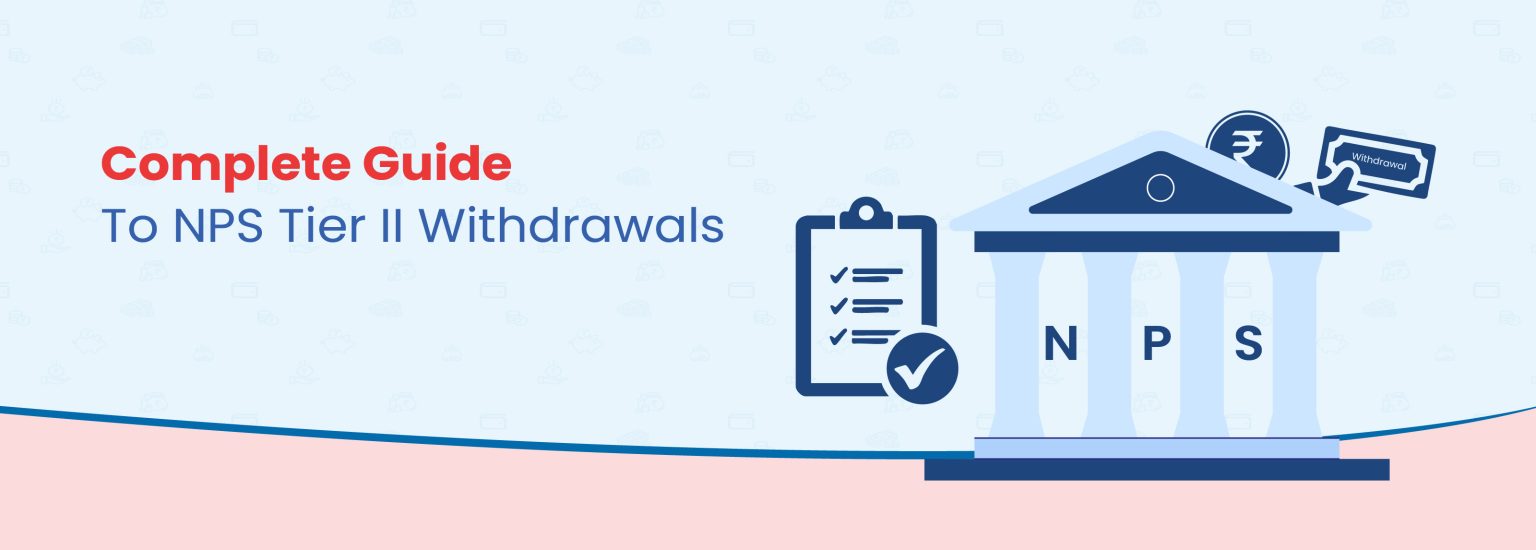The National Pension System (NPS) offers two distinct account types to cater to different financial needs: Tier 1 and Tier 2. While Tier 1 is a long-term retirement savings account with strict withdrawal rules, NPS Tier 2 functions more like a voluntary savings account, offering significant liquidity. Understanding the nuances of NPS Tier 2 withdrawals, including the processes, charges, and taxation, is crucial for effectively managing your funds. This guide will provide a comprehensive overview.
What is NPS Tier 2 and How is it Different from Tier 1?
To fully grasp the flexibility of NPS Tier 2, it’s essential to differentiate it from its counterpart, Tier 1. Here’s a breakdown of NPS Tier 1 vs NPS Tier 2:
| Feature | NPS Tier 1 | NPS Tier 2 |
| Purpose | Primary retirement savings account | Voluntary savings, offering liquidity |
| Withdrawal Rules | Highly restricted, partial withdrawals for specific reasons after 3 years, full exit only at retirement (60/65 years) or under specific conditions. | Highly flexible, withdrawals permitted anytime without restrictions |
| Lock-in Period | Funds are locked until retirement (typically 60 years) | No lock-in period |
| Tax Benefits | Contributions eligible for significant tax deductions (e.g., Section 80C, 80CCD(1B), 80CCD(2)). Maturity withdrawals are partially tax-exempt. | Generally no tax benefits on contributions or withdrawals for non-government employees. Central government employees can get a tax deduction of up to ₹1.5 lakh under Section 80C with a 3-year lock-in. |
| Minimum Initial Contribution | ₹ 500 | ₹ 1,000 |
| Minimum Subsequent Contribution | ₹ 500 | ₹ 250 |
| Minimum Annual Contribution | ₹1,000 to keep the account active | No annual minimum (as long as Tier 1 is active) |
In essence, what is NPS Tier 2 can be best described as a flexible investment avenue that leverages the professional fund management and low-cost structure of NPS, but without the stringent lock-ins and primary tax benefits of Tier 1 (except for central government employees).
Who is Eligible to Open a Tier 2 Account?
To open an NPS Tier 2 account, you must fulfill two primary conditions:
- Active Tier 1 Account: You must already have an active NPS Tier 1 account and a Permanent Retirement Account Number (PRAN) assigned to you.
- Age and Residency: You must be an Indian citizen (resident or NRI) between 18 and 70 years of age.
Essentially, NPS Tier 2 is an add-on account for existing NPS Tier 1 subscribers who desire more liquidity for their savings.
Withdrawal Rules: Online vs. Offline Process
One of the key advantages of NPS Tier 2 is its highly flexible NPS withdrawal rules. Unlike Tier 1, there are no restrictions on the frequency or purpose of withdrawals from your Tier 2 account. You can withdraw funds partially or fully at any time.
Here’s how you can typically initiate a withdrawal:
- Online Process (Recommended for convenience):
Log in to the CRA (Central Recordkeeping Agency) portal: Access your NPS account online using your PRAN and password.
Navigate to the Withdrawal Section: Look for an option related to NPS Tier 2 withdrawal or Withdrawal from Tier II.
Enter Details: Specify the amount you wish to withdraw.
Confirm: Review the details and confirm the transaction.
Bank Account Verification: Your registered bank account will likely be verified instantly via a ‘penny drop’ mechanism to ensure the funds are disbursed to the correct account.
The amount is generally credited to your registered bank account within 2-3 working days after the successful processing of the request.
- Offline Process:
Obtain Withdrawal Form: Download the UOS-S12 form (NPS Tier II withdrawal form) from the CRA website or collect it from your nearest Point of Presence (POP).
Fill the Form: Accurately complete the form, providing your PRAN, bank details, and the withdrawal amount.
Attach Documents: Include necessary supporting documents such as your PRAN card copy, bank proof (cancelled cheque or bank certificate with account details), and identity/address proof if required by your POP.
Submit to POP: Submit the filled form and documents to your Point of Presence (POP) – Service Provider (POP-SP). The POP will verify the details and initiate the withdrawal request on your behalf.
Charges Involved in Tier 2 Withdrawals (if any)
NPS is known for its low-cost structure, and this generally extends to NPS Tier 2 as well. While there are no specific NPS Tier 2 withdrawal charges directly levied on the withdrawal amount itself, you should be aware of the general charges associated with your NPS account, which indirectly affect your net returns. These include:
POP (Point of Presence) Charges: These are fees charged by your POP for various services, including contribution uploads. For eNPS (online) subsequent contributions (which you might make before withdrawal), a charge of up to 0.20% of the contribution (subject to a minimum of ₹15 and maximum of ₹10,000) might apply for All Citizen and Tier II accounts.
CRA (Central Recordkeeping Agency) Charges: Annual maintenance charges and charges per transaction.
PFM (Pension Fund Manager) Charges: A very low Investment Management Fee (IMF) based on your Asset Under Management (AUM).
Custodian Charges: Very minimal asset servicing charges.
It’s important to note that these charges are typically deducted from your NPS corpus through unit cancellation, not as a direct fee at the time of withdrawal. The overall charges in NPS remain among the lowest compared to other investment avenues.
Taxation of Tier 2 Withdrawals
This is a critical aspect where NPS Tier 2 differs significantly from Tier 1. The taxation of NPS Tier 2 withdrawal rules is as follows:
Contributions: Generally, contributions to NPS Tier 2 accounts are not eligible for tax deductions under Section 80C or any other section of the Income Tax Act for private-sector or self-employed individuals.
Exception: Central Government employees can claim a tax deduction for contributions to their NPS Tier 2 account under Section 80C, provided there is a 3-year lock-in period for the withdrawn amount.
Withdrawals (Gains): The returns or gains generated from your NPS Tier 2 investments are taxable. They are typically treated as income from other sources and taxed as per your individual income tax slab rates. Unlike equity mutual funds, they are generally not treated as capital gains, and no distinction is made between short-term and long-term capital gains for this purpose, with the entire gain being added to your taxable income.
Therefore, while NPS Tier 2 offers liquidity, it does not come with the same tax efficiency as Tier 1 for non-government employees.
Conclusion
NPS Tier 2 is a valuable addition to the National Pension System, providing flexibility and liquidity for your savings while still benefiting from professional fund management and a low-cost structure. It serves as an excellent complement to your primary retirement savings in Tier 1. While its NPS withdrawal rules are significantly more relaxed, it’s crucial to be aware of the associated charges and, more importantly, the taxation of withdrawals, which can impact your net proceeds. By understanding these aspects, you can effectively utilize NPS Tier 2 to meet your short-to-medium-term financial goals alongside your long-term retirement planning.






Leave a Reply